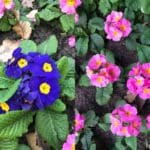The yellow color is nostalgic for warm, happy, and exciting memories. It may be of childhood, running around through the cool breeze warmed by the afternoon sun or lying on the ground, basking in the sunlight that makes one sweaty in a good way.
The most luminous of all colors, yellow brings forth a cheerful and optimistic mood, especially if they came in the form of charming roses.
After the discovery of yellow roses, euphoria and excitement filled the air as breeders and enthusiasts grew the sunny flowers. Its cultivation resulted in the production of more yellow rose varieties that brought satisfaction to any tastes of various rose growers.
In fact, it later paved the way for innovations in the horticulture industry such as the creation of new rose flower colors.
This article will discuss some interesting facts about yellow roses and their bright and cheerful contributions to the floral world.
History of Yellow Rose

Although discovered in the 1800s, the yellow rose is a relatively new addition to the many types of roses that people have come to adore. Discovered to have been growing abundantly in the Middle East, three wild yellow rose species were introduced to Europe.
Rosa ecae has yellow single petals, reddish brown stems, and mossy leaves. Rosa foetida is a larger yellow rose with brown stems and black thorns while Rosa hemispherica or the ‘sulfur rose’ is known for the sulphur-smelling double yellow petals and gray-green leaves. These three wild roses became the foundation of modern yellow roses and even orange and green ones.
Hybridists became busy creating new rose varieties and they succeeded in the production of new, bright-colored rose flowers. But the wild yellow roses are known to be not as hardy as the pink and white species that the resulting varieties were observed to be more susceptible to black spots and other diseases.
With time and patience, breeders eventually came up with sturdier and even more beautiful yellow roses that have sweet and fruity fragrances too! The mostly single-petalled roses now exist in multiple petals that range from lighter to brighter shades of yellow.
What Do Yellow Roses Mean and Signify?
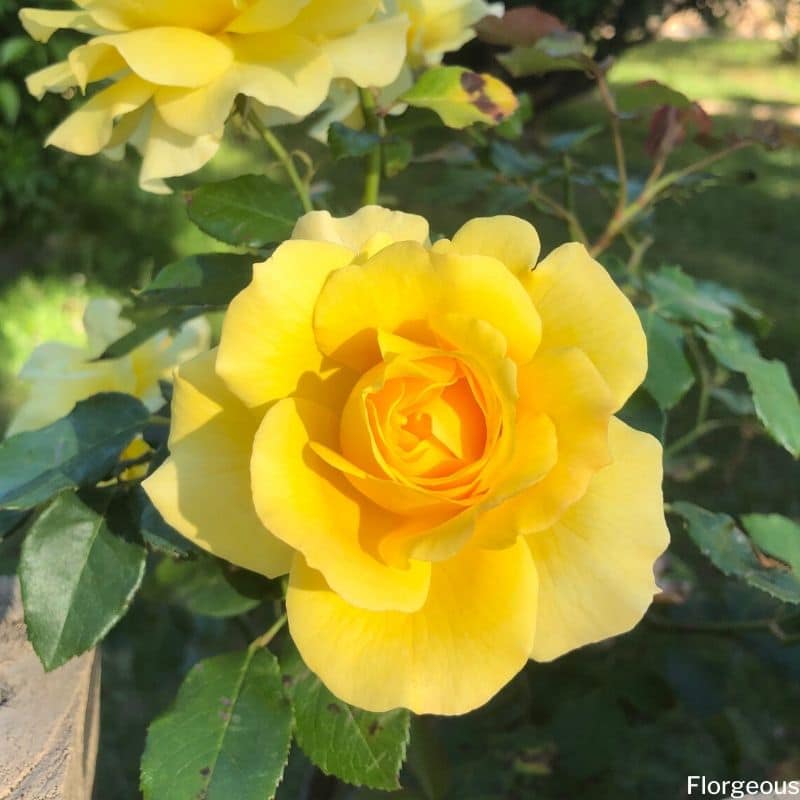
What do yellow roses mean exactly? As with the other types of rose, the yellow rose is associated with religious cultures too.
In the Islamic tradition, yellow roses are said to have first appeared from the falling sweats of travelling ‘al-buraq’, a flying centaur-like creature that carried prophets (1).
The popular language of flowers of the 1800s defines yellow roses as jealousy. People who received them are being envied by the sender and although this may be a form of flattery, the conservative Victorian era thought of it as a negative connotation and this meaning still holds true to the French. Sending yellow roses also meant a firm no. Often suitors are given back yellow roses to reject their declared affections (2).
Meanings of flowers evolve as well and today, more optimistic definitions are associated with yellow roses. Some cultures like the modern Greeks associate yellow roses and other bright flowers with precious materials like gold so the flowers are highly valued. To the Mexicans, the yellow color of roses are reminiscent of their staple golden corns that the flower has become a symbol of abundance.
A bouquet of yellow rose given today is a symbol of friendship and remembrance. It represents a cheerful and exciting friendship bound to last a lifetime.
Check our other guides about rose meaning and how to take care of roses.
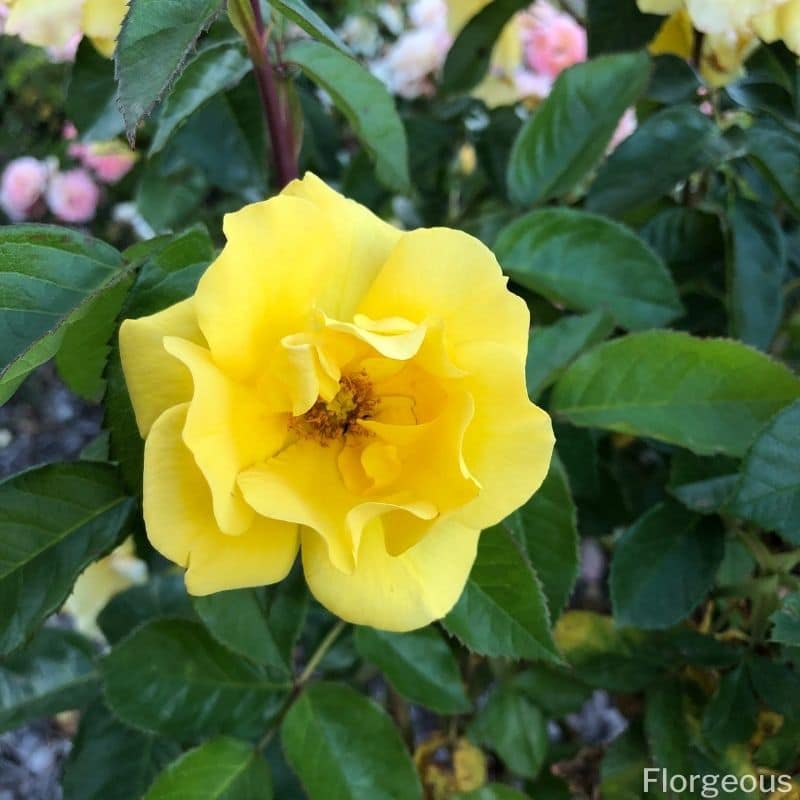
Types of Yellow Roses You Can Grow
Unlike other roses, yellow roses are perfect for expressing love to a good friend and to bring joy in a non-romantic way. Here are some of the best yellow roses you can grow!
Rosa ‘Graham Thomas’
Also known as Ausmas, ‘Graham Thomas’ grows a bushy upright shrub with smooth green leaves. The blossoms of the Graham Thomas variety of yellow roses are fragrant deep yellow and double-petalled.
Bred by David Austin in 1983, this amazing rose won the Award of Garden Merit from the Royal Horticultural Society. It can be grown as a border rose and the blossoms are exceptional as cut flowers too.
Rosa ‘Sunshine Daydream’
This is the best rose of 2012 that was given the All-American Rose Selections Award. The medium-sized flower of this variety is cup-like in shape, has light yellow petals that turn into a cream color when cold, and dark yellow center.
The plant has an excellent resistance to pests and diseases making them adapt well to different climate conditions.
Julia Child Rose
Otherwise known as the ‘Absolutely Fabulous’ rose, this rose is truly mesmerizing for its butter gold color and sweet licorice candy scent.
The shrub grows rounded emphasized by the disease-resistant glossy leaves. This award-winning rose variety is a repeat bloomer hybridized by Tom Carruth in 2004. Julia Child roses are perfect for adding a high level of elegance to any setting!
Rosa ‘Sun Flare’
This variety bears clusters of pale to medium yellow blossoms that also have a licorice-like scent. The medium-sized flowers bloom throughout the summer and the plant grows healthily all year long.
Reaching about a meter height, ‘Sun Flare’ has notable reddish thorns and glossy dark-green foliage. It was bred by William Warriner and later introduced into the United States in 1981.
Rosa ‘Landora’
‘Landora’ is one of the most popular yellow hybrid tea roses. Their double yellow flowers are cupped in shape and their leaves are green and shiny with finely toothed edges.
The plant has a climbing growth habit that can naturally grow up to a meter. This variety was popularized by Tantau in 1970.
The Pilgrim Rose
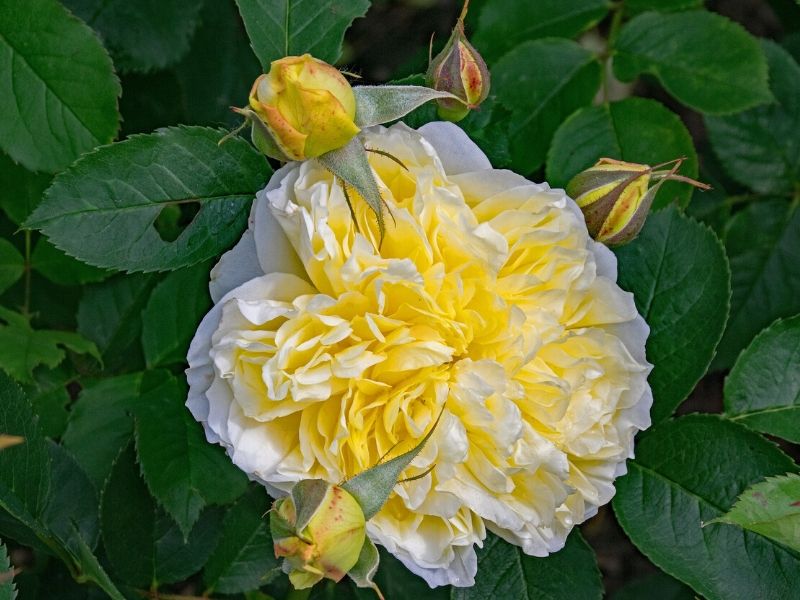
The many petals of this rose that start as cup-shape and open into flat blossoms are a unique quality of this rose variety.
The lovely bloom is mostly soft yellow fading to a lighter shade on the edges. It is extremely fragrant with a hint of tea. Another praised hybrid of David Austin, this plant continuously bloom and is relatively pest resistant.
Peace Rose
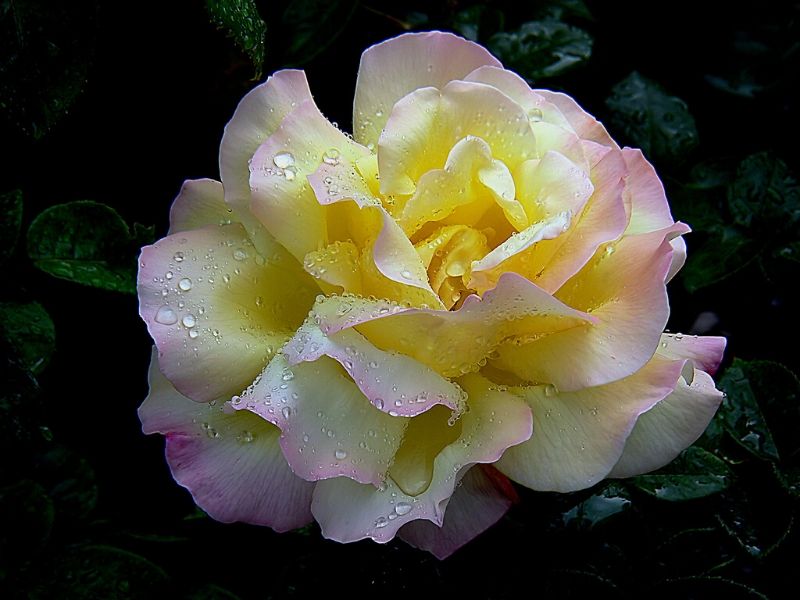
The classic ‘Peace’ rose won the second Best Rose of the Year in 1941. The rosy pink outer edges of its flowers are enhanced by the golden yellow centers. ‘Peace’ grows vigorously with large, glossy dark green foliage.
It is formally known as ‘Madame A. Meilland’ created by Francis Meilland in France in 1935. It was said that the breeder sent budwood of this variety to growers in different countries so that the plant could survive the war.
Rosa ‘Sunsprite’
A top-rated rose variety, Sunsprite produces clusters of deep yellow ruffled flowers. These yellow roses bloom from June to September and the plant makes a good addition to a color-popping garden.
The short stems on these yellow roses, though, unfortunately make them inferior as cut flowers. But this is a relatively disease-resistant variety growing as a bushy shrub with light green, glossy leaves. Reimer Kordes developed this rose in 1973 and otherwise called it ‘Friesia’ after the breeder’s native origin.
Lady of Shalott Rose
The loosely arranged, light orange petals with contrasting golden-yellow underside is the notable characteristic of these varieties of yellow roses, as well as its nice, warm spiced tea fragrance.
These yellow roses form a vigorous shrub with long stems that are slightly bent. The mature leaves are green while the young ones have a tinge of bronze. It is one of David Austin’s award-winning hybrids as well.
Which of These Yellow Roses Will You Grow?
As you can see, there are so many reasons to consider growing yellow roses – and there are plenty of varieties of yellow roses to choose from!
Whether you want to bring joy to a good friend with a yellow rose bouquet or you want to add a lovely fragrance and gorgeous appearance to your backyard with a yellow rose bush, it’s safe to say that yellow roses add a touch of elegance (and a dose of platonic love!) no matter where they are grown.
Plant your yellow rose bush in full sunlight, and you’ll experience the amazing results in no time. Enjoy!
References
Reference List
(1) Goor, A. “The history of the rose in the Holy Land throughout the ages.” Massada and Am Hassefer. Pp. 135.
(2) Mother. “Flowers and their meanings”. Lotus Press. 1992. Pp. 309.
Close





